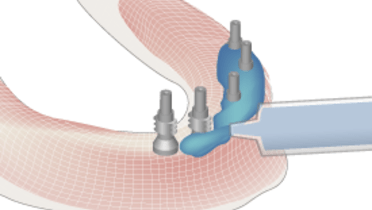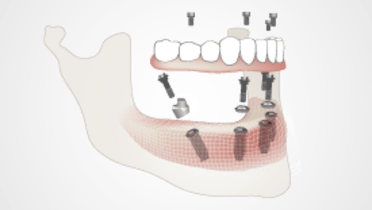-
0
Patient Assessment
- 0.1 Patient demand
- 0.2 Overarching considerations
- 0.3 Local history
- 0.4 Anatomical location
- 0.5 General patient history
-
0.6
Risk assessment & special high risk categories
- 5.1 Risk assessment & special high risk categories
- 5.2 age
- 5.3 Compliance
- 5.4 Smoking
- 5.5 Drug abuse
- 5.6 Recreational drugs and alcohol abuse
- 5.7 Parafunctions
- 5.8 Diabetes
- 5.9 Osteoporosis
- 5.10 Coagulation disorders and anticoagulant therapy
- 5.11 Steroids
- 5.12 Bisphosphonates
- 5.13 BRONJ / ARONJ
- 5.14 Radiotherapy
- 5.15 Risk factors
-
1
Diagnostics
-
1.1
Clinical Assessment
- 0.1 Lip line
- 0.2 Mouth opening
- 0.3 Vertical dimension
- 0.4 Maxillo-mandibular relationship
- 0.5 TMD
- 0.6 Existing prosthesis
- 0.7 Muco-gingival junction
- 0.8 Hyposalivation and Xerostomia
- 1.2 Clinical findings
-
1.3
Clinical diagnostic assessments
- 2.1 Microbiology
- 2.2 Salivary output
-
1.4
Diagnostic imaging
- 3.1 Imaging overview
- 3.2 Intraoral radiographs
- 3.3 Panoramic
- 3.4 CBCT
- 3.5 CT
- 1.5 Diagnostic prosthodontic guides
-
1.1
Clinical Assessment
-
2
Treatment Options
- 2.1 Mucosally-supported
-
2.2
Implant-retained/supported, general
- 1.1 Prosthodontic options overview
- 1.2 Number of implants maxilla and mandible
- 1.3 Time to function
- 1.4 Submerged or non-submerged
- 1.5 Soft tissue management
- 1.6 Hard tissue management, mandible
- 1.7 Hard tissue management, maxilla
- 1.8 Need for grafting
- 1.9 Healed vs fresh extraction socket
- 1.10 Digital treatment planning protocols
- 2.3 Implant prosthetics - removable
-
2.4
Implant prosthetics - fixed
- 2.5 Comprehensive treatment concepts
-
3
Treatment Procedures
-
3.1
Surgical
-
3.2
Removable prosthetics
-
3.3
Fixed prosthetics
-
3.1
Surgical
- 4 Aftercare
印模 - 平行与非平行种植体
Key points
- 使用斜角式种植体促进患者康复将有助于按照预期和理想方式放置影响印模程序的非平行种植体
- 在决定使用哪种印模技术时,必须评估种植体的平行情况
- 当种植体之间相互平行时,可以采用封闭取模方式,也可采用开放取模方式
- 当种植体之间相互不平行时,需要采用开放取模方式
非平行种植体
正如我们在 All-on-4 患者解决方案中看到的,在缺齿牙颌的治疗过程中,通过使用斜角式后牙种植体和垂直前牙种植体,种植体的数量有所减少,这些良好长期临床效果非常振奋人心。 在治疗方案设计阶段,临床医师必须了解印模帽螺丝的放置、拧紧和松开以及印模的放置和取出等问题,因为需要接触后牙种植体的远端角度,并确保足够的患者口腔张开度。
就关键临床步骤而言,需要使用经过修改的临床方案来获取非平行种植体的精确印模,因为如果在这些情况下使用封闭取模方式(图 2a),很难在不破裂或变形的情况下取下印模,印模帽周周甚至可能会锁住。 非平行种植体是采用开放取模方式的明显适应症(图 2b)。 使用托盘中出现的相应通道可以制作定制托盘,这些通道可以让开放式托盘印模帽通过托盘呈现出来。 这样一来,印模材料聚合之后,即可轻松找到并松开印模帽螺丝。 松开印模帽螺丝之后,即可轻松拆下嵌入了开放式托盘印模帽的印模(图 2c)。



